1. Introduction
Smart glasses have become one of the most talked-about innovations in wearable technology. These devices, which integrate computing capabilities into a pair of glasses, are transforming how we interact with digital information in our daily lives. Over the years, smart glasses have evolved from simple, bulky prototypes to sleek, high-performance gadgets designed for both personal and professional use.
In the early stages of development, devices like Google Glass introduced the idea of wearable computing, allowing users to access information, take photos, and receive notifications directly in their line of sight. Today, leading tech companies such as Meta (with its Ray-Ban Stories) and Vuzix are bringing even more advanced features to the table, integrating augmented reality (AR), voice controls, and seamless integration with other devices.
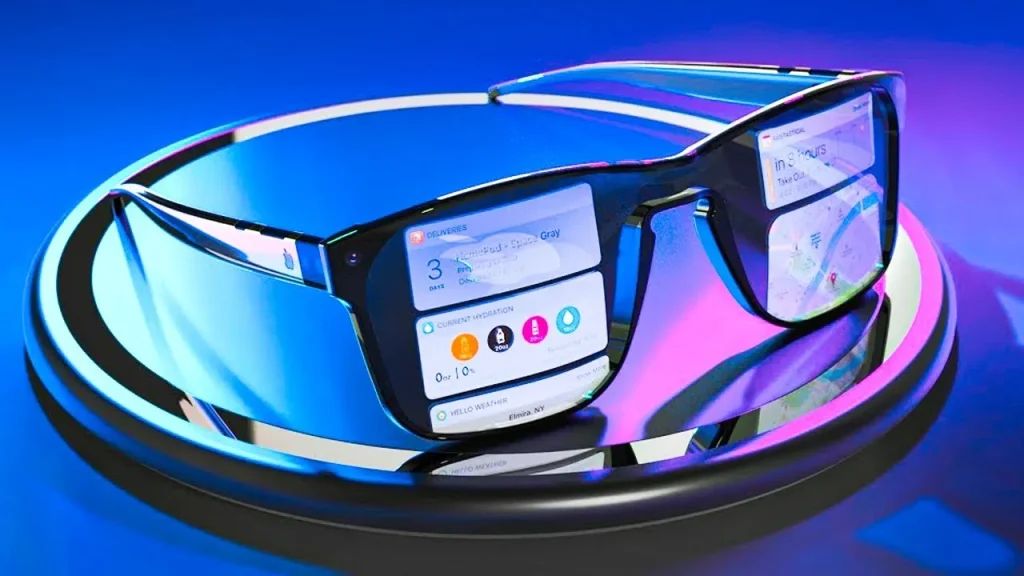
Importance of Smart Glasses in the Context of the Future of Computing
“Smart Glasses: The Future of Computing?” is a question that’s increasingly being asked as these devices push the boundaries of what we know as traditional computing. In the future, smart glasses could replace smartphones, becoming the primary interface for accessing information and controlling devices. As AR and VR technologies improve, smart glasses have the potential to revolutionize industries, including healthcare, education, and entertainment, by providing immersive, hands-free computing experiences.
These devices are poised to change the way we interact with the world around us. Imagine a world where instead of looking down at a smartphone screen, you can simply look up and see data, maps, or even holographic images in your field of vision. This hands-free computing approach could free up time and increase productivity, making smart glasses an essential tool in the digital future.
2. What Are Smart Glasses?
Definition and General Overview
Smart glasses are wearable devices that integrate advanced computing features directly into a pair of glasses. Unlike traditional eyewear, smart glasses have built-in technology such as displays, sensors, cameras, and connectivity that allow users to interact with digital content hands-free. These devices often feature augmented reality (AR) or heads-up displays, providing real-time information to users without requiring them to look down at a screen.
The primary function of smart glasses is to offer a seamless blend of the physical world and the digital world, allowing users to access data, navigate, communicate, and perform various tasks without having to use their hands. As a part of the larger trend in wearable technology, smart glasses are poised to become a key player in how we interact with computing systems in the future.
Brief History and Technological Advancements
The idea of smart glasses dates back to the 1960s when researchers envisioned wearable computing systems. However, it wasn’t until the early 2000s that we saw practical attempts at bringing these devices to market. One of the first notable attempts was Google Glass, which launched in 2013. Despite facing challenges in terms of public reception and functionality, Google Glass paved the way for subsequent advancements.
In recent years, companies like Meta, Vuzix, and Epson have made significant strides in improving the functionality and user experience of smart glasses. These advancements include improvements in battery life, display clarity, and the integration of AR technology. Current models, such as Meta’s Ray-Ban Stories, allow users to take photos, listen to music, and even make calls—all while maintaining a sleek, stylish design.
Today, smart glasses have evolved into more practical, user-friendly devices that integrate with other technologies like smartphones, smartwatches, and virtual assistants, pushing the boundaries of what wearable computing can achieve.
How Smart Glasses Differ from Traditional Glasses
Smart glasses differ significantly from traditional glasses in both their functionality and design. While traditional glasses primarily serve to correct vision, smart glasses are equipped with technology that allows for hands-free interaction with digital systems. Traditional glasses typically offer minimal or no added functionality beyond their primary role—correcting eyesight or providing protection from the sun.
Smart glasses, on the other hand, often feature small, embedded displays that can project information directly into the user’s field of vision. They also include sensors for tracking movement, voice recognition for hands-free control, and cameras for capturing images or video. This makes them far more interactive and versatile than traditional eyewear. Additionally, smart glasses are designed to integrate seamlessly with other devices and can provide real-time data from sources like smartphones, smartwatches, and cloud services.
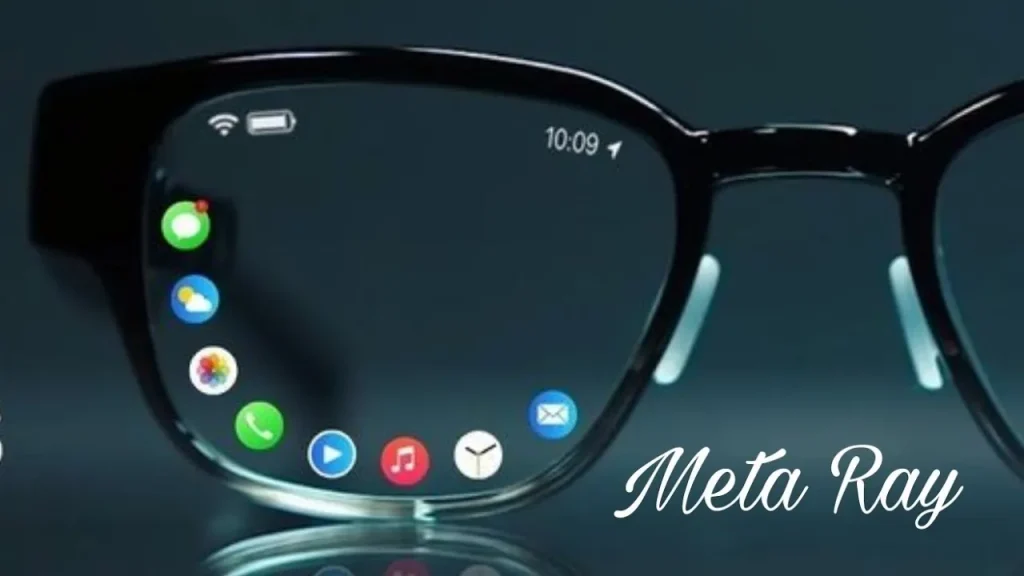
3. Key Features of Smart Glasses
Display Technology: How the Glasses Display Information
One of the standout features of smart glasses is their display technology. Depending on the model, smart glasses can use augmented reality (AR), holography, or heads-up displays (HUD) to project digital information directly into the user’s line of sight.
- Augmented Reality (AR): AR is the most common display technology used in smart glasses today. It overlays digital images, text, or data onto the real world, providing users with relevant information without interrupting their natural environment. For example, AR can display navigation directions, real-time translation, or even contextual information about objects in the user’s surroundings.
- Holography: While still emerging, holographic displays in smart glasses have the potential to project 3D images into the air, making the digital world even more immersive. These devices are designed to provide users with a three-dimensional experience, which could be particularly useful for tasks like virtual meetings or interactive gaming.
- Heads-Up Display (HUD): HUD technology allows information to be displayed on a small screen or lens within the glasses. This feature is often used in sports or navigation, giving the user relevant data without the need to look away from their field of view.
The key advantage of these display technologies is that they provide a hands-free computing experience, letting users interact with the digital world while still being present in the real one.
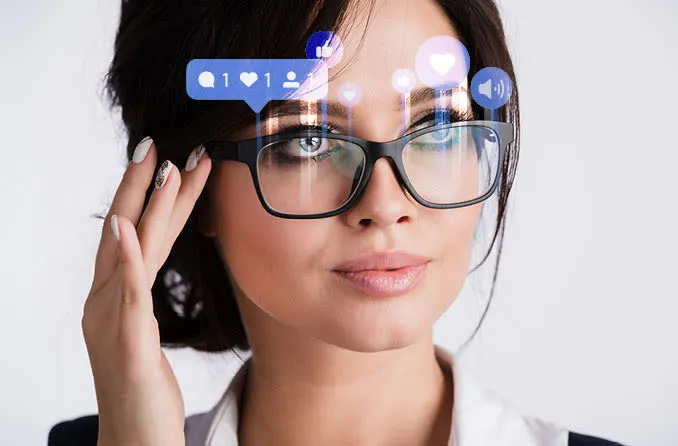
Audio and Microphone Integration: Sound and Voice Control Capabilities
Smart glasses are equipped with advanced audio systems and microphones, allowing for voice control and immersive sound experiences. These features are designed to provide a seamless and hands-free user experience.
- Sound Integration: Many smart glasses have built-in bone conduction speakers or open-ear audio systems that deliver sound without blocking the ear canal. This allows users to hear audio notifications, music, or calls while still being aware of their surroundings. The sound quality varies by model, but high-end smart glasses often offer stereo sound for a richer audio experience.
- Voice Control: Voice integration is a key feature in modern smart glasses. Through voice commands, users can control various aspects of their glasses, such as taking photos, adjusting volume, or accessing apps. Integration with virtual assistants like Google Assistant, Alexa, or Siri allows for even more advanced voice control options, enabling users to perform tasks hands-free and on the go.
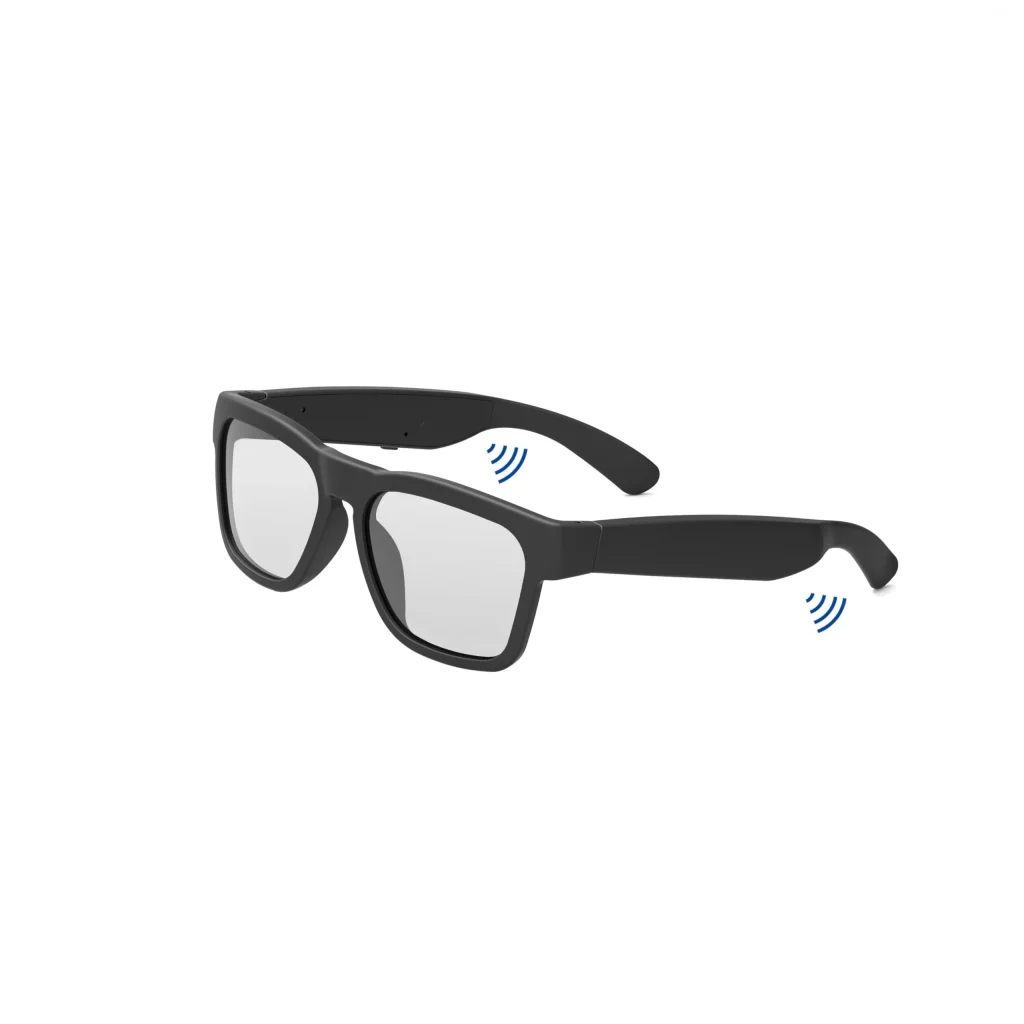
Sensors and Tracking: Motion Sensors, Eye-Tracking, and Other Biometric Features
Smart glasses come equipped with a variety of sensors that enhance the user experience. These sensors are designed to detect and respond to the user’s environment or actions.
- Motion Sensors: Many smart glasses include motion sensors like accelerometers and gyroscopes, which track head movement and orientation. This allows for interaction with the device through simple gestures, such as nodding or tilting the head. For example, you might scroll through notifications or control media playback just by tilting your head.
- Eye-Tracking: Some smart glasses are equipped with eye-tracking technology, which can detect where the user is looking and adjust the display accordingly. This feature can also be used for hands-free controls, such as selecting items by simply looking at them or controlling certain functions with eye movements.
- Biometric Features: Smart glasses are increasingly incorporating biometric sensors, such as heart rate monitors and stress detection sensors. These sensors can provide health-related feedback, such as tracking physical activity or stress levels during work or exercise.
Battery Life and Charging: How Long the Device Lasts on a Single Charge and Charging Options
Battery life is a critical factor in the usability of smart glasses. Most smart glasses today can last anywhere from 4 to 8 hours on a single charge, depending on usage. Battery life can vary significantly based on the features in use, such as the display type (AR or HUD) and audio features.
- Battery Life: The general battery life of smart glasses can range from 4 to 8 hours. However, advanced features like AR display or constant Bluetooth connectivity may reduce battery life. Manufacturers are continuously working to improve battery efficiency, with some glasses featuring low-power displays to extend usage time.
Charging Options: Charging smart glasses is typically done through a magnetic charging dock or USB-C port. Some models may also offer wireless charging capabilities. Additionally, many glasses come with portable charging cases, allowing users to recharge their smart glasses on the go, making them more practical for extended use.
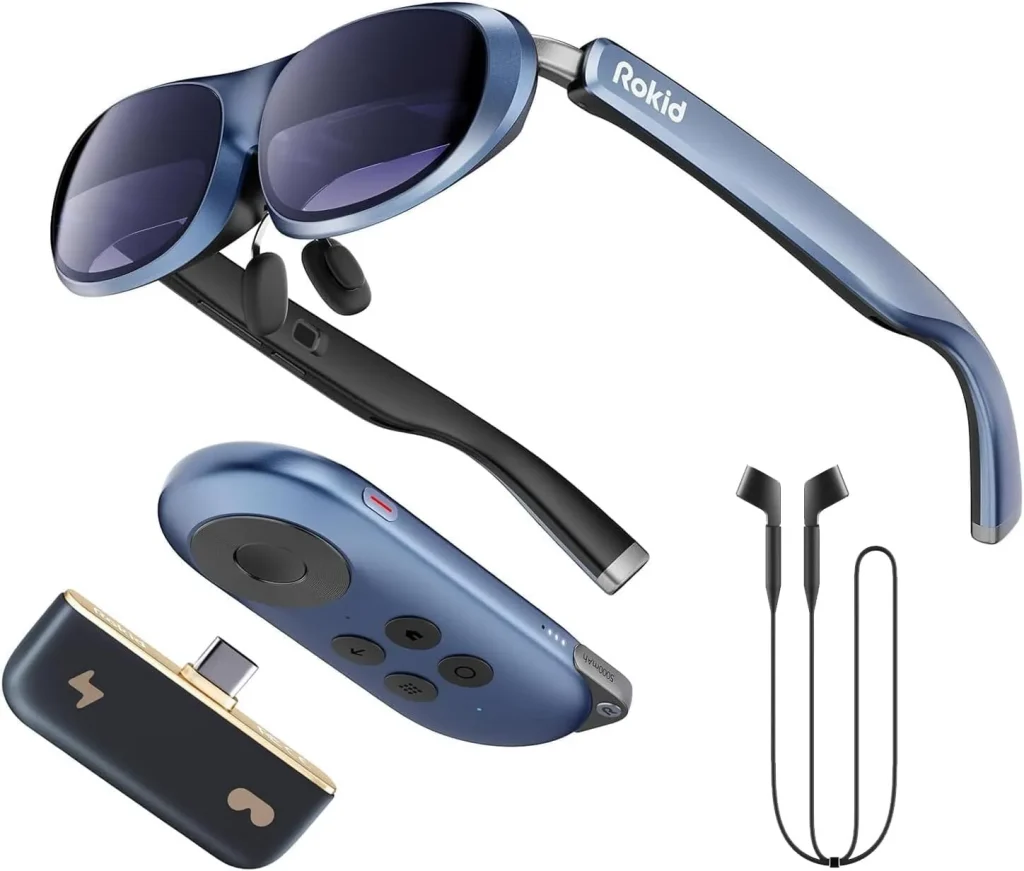
4. Top Smart Glasses Brands and Models
The smart glasses market is quickly evolving, with several major brands leading the charge in terms of innovation, design, and features. Below is a comparison of some of the most notable smart glasses models, focusing on their unique features and technological advancements. As we explore these options, it becomes clear why the question, “Smart Glasses: The Future of Computing?” is so relevant today.
1. Meta’s Ray-Ban Stories
Meta, in collaboration with Ray-Ban, introduced the Ray-Ban Stories in 2021, blending the fashion-forward design of Ray-Ban glasses with Meta’s technology. These smart glasses represent a major leap in wearable computing by combining stylish frames with integrated smart features.
- Key Features:
- Audio Integration: Ray-Ban Stories come equipped with open-ear speakers, allowing users to listen to music, make calls, and hear notifications without blocking out the world around them.
- Camera: Integrated with dual 5MP cameras, users can take photos and record videos directly from the glasses, perfect for capturing hands-free moments.
- Voice Control: The glasses are integrated with Meta’s virtual assistant, allowing for voice commands to control the glasses, such as making calls or adjusting volume.
- Battery Life: Offers up to 6 hours of use, with a quick 1-hour charge time.
- Audio Integration: Ray-Ban Stories come equipped with open-ear speakers, allowing users to listen to music, make calls, and hear notifications without blocking out the world around them.
Ray-Ban Stories are targeted toward casual users who want to integrate smart technology without compromising on style, making them one of the most fashionable smart glasses on the market.
2. Google Glass (Enterprise Edition 2)
Google’s Google Glass was one of the first smart glasses to hit the market, though it initially faced challenges with privacy concerns and a lack of consumer appeal. However, Google Glass found its niche in enterprise and industrial applications, evolving into the Google Glass Enterprise Edition 2.
- Key Features:
- Heads-Up Display (HUD): Google Glass uses a small display that sits just above the right eye, providing real-time information without obstructing the user’s view.
- Voice and Gesture Control: Users can control Google Glass using both voice commands and head gestures, such as swiping or nodding.
- Camera and Video: Equipped with an 8MP camera for photos and video recording, ideal for hands-free documentation in industrial and medical fields.
- Integration with Google Services: Seamlessly integrates with Google’s suite of services, including Gmail, Calendar, and Google Assistant.
- Battery Life: Provides up to 8 hours of use with the option of an extended battery for heavy-duty tasks.
- Heads-Up Display (HUD): Google Glass uses a small display that sits just above the right eye, providing real-time information without obstructing the user’s view.
Google Glass remains a top choice for businesses that require real-time data and hands-free documentation, especially in fields such as manufacturing, healthcare, and logistics.
3. Vuzix Blade
The Vuzix Blade is a pair of smart glasses aimed at professionals who need an all-in-one wearable solution. With a focus on enterprise use, the Vuzix Blade features a sleek design and AR capabilities, providing real-time information in various work environments.
- Key Features:
- AR Display: The Vuzix Blade features a see-through display that overlays digital information onto the physical world, making it ideal for applications such as warehouse management and field service.
- Camera and Video: Equipped with an HD camera, users can capture photos, videos, and stream content directly through the glasses.
- Voice and Gesture Control: Like the other smart glasses, the Vuzix Blade includes voice control and gesture recognition for easy, hands-free operation.
- Battery Life: Offers up to 8 hours of use, with a compact design that makes it easy to wear for extended periods.
- AR Display: The Vuzix Blade features a see-through display that overlays digital information onto the physical world, making it ideal for applications such as warehouse management and field service.
Vuzix Blade’s AR capabilities and robust design make it a strong competitor in the enterprise sector, especially for professionals in industries like logistics, healthcare, and field service.
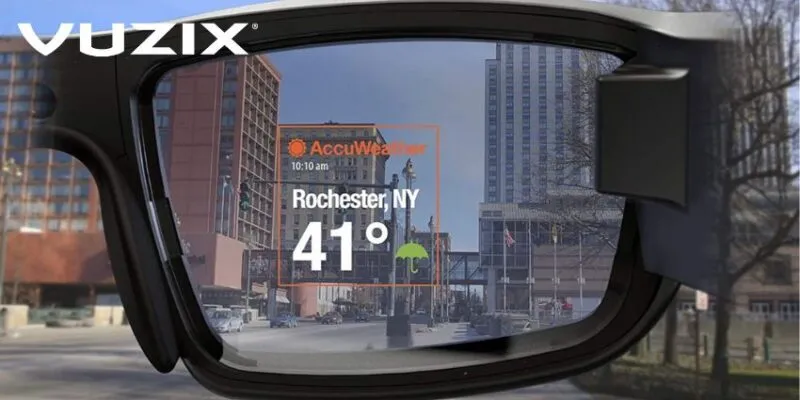
4. Bose Frames
Bose has entered the smart glasses market with its Bose Frames, a unique pair of audio-focused smart glasses that prioritize sound over visuals. These glasses combine Bose’s premium audio technology with the functionality of smart glasses, offering an immersive sound experience.
- Key Features:
- Open-Ear Audio: Bose Frames feature built-in speakers that deliver rich sound directly to the ears without covering them, ideal for listening to music or taking calls.
- Bluetooth Connectivity: The frames connect to your smartphone via Bluetooth, allowing for music streaming, voice commands, and call management.
- Design: The design is stylish and lightweight, making the Bose Frames more akin to a traditional pair of sunglasses with smart capabilities.
- Battery Life: Up to 3.5 hours of continuous playtime on a single charge.
- Open-Ear Audio: Bose Frames feature built-in speakers that deliver rich sound directly to the ears without covering them, ideal for listening to music or taking calls.
While Bose Frames don’t offer AR displays or cameras, they provide a unique combination of high-quality audio and hands-free smart functionality, perfect for casual users who want smart glasses that focus on audio rather than visuals.
5. North Focals
North Focals, which was acquired by Google, offers a stylish pair of smart glasses with a focus on AR display. While the brand is no longer producing new models, its Focals smart glasses were some of the most innovative in terms of integrating an AR display into a stylish, everyday frame.
- Key Features:
- AR Display: The smart glasses project notifications, messages, and other data directly into the user’s vision using a small, discreet display.
- Minimalist Design: The glasses feature a slim design, which is more in line with traditional eyewear than other bulkier smart glasses models.
- Touchpad Control: Users control the Focals using a small ring that acts as a touchpad, offering intuitive navigation.
- Battery Life: Offers about 18 hours of use on a single charge.
- AR Display: The smart glasses project notifications, messages, and other data directly into the user’s vision using a small, discreet display.
While North Focals have been discontinued, they serve as a great example of how smart glasses can combine cutting-edge AR technology with stylish design.
Brand-Specific Features and Technological Advancements
Each of these brands has brought unique innovations to the smart glasses market, from Meta’s stylish collaboration with Ray-Ban to Vuzix’s industrial-grade AR capabilities. Google Glass remains a top choice for enterprise use, while brands like Bose focus on audio integration for a more casual smart glasses experience. As the technology continues to improve, we can expect even more groundbreaking advancements in smart glasses, including better battery life, more immersive AR features, and improved voice control systems.
5. User Experience and Comfort
When considering the adoption of smart glasses, user experience and comfort are crucial factors. Since these devices are worn for extended periods, the way they fit, their weight, and their ease of use can significantly impact the overall experience. Let’s dive into these aspects, focusing on how smart glasses are designed for long-term wear and user interaction.
Fit and Wearability: Comfort for Long-Term Wear
Comfort is one of the most important considerations when choosing smart glasses. Unlike traditional glasses, which are typically worn for short periods, smart glasses are often designed for continuous use throughout the day.
- Adjustability: Many smart glasses come with adjustable arms or nose pads to ensure a better fit. This customization helps to accommodate different face shapes and sizes, ensuring a snug yet comfortable fit for prolonged use.
- Ergonomics: Smart glasses are designed to be lightweight, making them more comfortable for long-term wear. Devices like Meta’s Ray-Ban Stories and Vuzix Blade are known for their ergonomic frames, which help distribute the weight evenly across the face, reducing discomfort over time.
- Lens Options: Some models allow users to swap lenses, such as prescription lenses, so users can maintain comfort without sacrificing their vision correction needs.
Weight and Design: Aesthetic Appeal, Lightweight Construction, and Ergonomic Design
Smart glasses must strike a balance between technological functionality and aesthetic appeal. Given that they are worn on the face, they must look good while also being comfortable.
- Lightweight Construction: Smart glasses are designed with lightweight materials, such as titanium or polymer frames, to ensure they do not feel heavy or uncomfortable on the face. For example, Meta’s Ray-Ban Stories feature a slim, lightweight design that blends seamlessly with traditional Ray-Ban styles. This lightweight construction helps avoid strain on the nose or ears, especially when worn for long durations.
- Stylish Design: As fashion plays an important role in the adoption of smart glasses, many brands have partnered with established eyewear companies. Ray-Ban, for instance, has brought its iconic designs to smart glasses, giving them a sleek, fashionable appearance. Smart glasses need to be both functional and stylish to appeal to the general public.
- Ergonomics: Aside from lightweight materials, many brands are focusing on the ergonomic design of smart glasses. The layout of the sensors, display, and speakers is optimized to ensure the glasses are comfortable without feeling bulky or awkward.
Ease of Use: Interface Design, Controls, and Ease of Interaction
An essential part of the smart glasses experience is how easily users can interact with the device. Given that these devices are worn on the face, intuitive controls and a user-friendly interface are key to their success.
- Interface Design: Smart glasses should feature a simple and clear interface that displays essential information without overwhelming the user. The display should not obstruct vision or cause strain. For instance, the Vuzix Blade features a see-through display that allows users to view both the physical world and digital data simultaneously. This integration of AR makes interaction intuitive and seamless.
- Controls: The controls of smart glasses vary by model but typically include touchpads, voice commands, and gesture recognition. For example, the Google Glass Enterprise Edition 2 allows users to control the device via voice commands, while the Ray-Ban Stories use a combination of physical buttons and voice controls for easy interaction.
- Voice Assistance and Gesture Control: With the rise of voice assistants like Google Assistant, Siri, and Alexa, controlling smart glasses via voice is becoming increasingly common. This hands-free interaction allows users to perform tasks like making calls, adjusting volume, or checking notifications without lifting a finger.
The goal is to make the user interface so simple and natural that users feel comfortable interacting with the smart glasses as easily as they would with a smartphone or smartwatch.

6. Applications of Smart Glasses
Smart glasses are not just an exciting new technology—they have practical applications in many areas of life. From personal use to professional environments, these devices are transforming how we interact with the world around us. Let’s explore some of the key ways smart glasses are being used.
Personal Use: Daily Activities Like Navigation, Messaging, and Entertainment
For personal use, smart glasses offer a wide range of features that make everyday tasks easier and more convenient. Some of the key applications include:
- Navigation: Smart glasses can provide turn-by-turn directions through an augmented reality (AR) display, overlaying navigation instructions onto the real world. This hands-free navigation helps users get to their destinations without having to look at their phones. For example, Google Glass and Meta’s Ray-Ban Stories can display maps and directions directly in your line of sight.
- Messaging and Communication: With built-in voice controls and connectivity to your smartphone, smart glasses allow you to send messages, make calls, or receive notifications without needing to reach for your phone. You can simply speak commands, making it easier to stay connected while on the go.
Entertainment: Smart glasses can enhance entertainment experiences by allowing users to listen to music, podcasts, or even watch videos without needing headphones. Many models, like the Bose Frames, feature built-in speakers that deliver audio directly to your ears, while still allowing you to hear your surroundings.
Enterprise Use: Industrial, Medical, and Professional Applications
Beyond personal use, smart glasses are increasingly being adopted in enterprise environments, where they can improve productivity and enhance professional tasks. These applications include:
- Remote Assistance: In industries like manufacturing, smart glasses can provide real-time remote support. Technicians can wear smart glasses with built-in cameras, allowing experts to view what the technician sees and provide step-by-step guidance via video call. This can help businesses solve technical issues faster and more efficiently.
- Field Service: For field workers, smart glasses can provide crucial information in real-time, such as equipment manuals, safety instructions, or inventory data, all while keeping their hands free to perform tasks. This is especially valuable in sectors like maintenance, construction, and logistics, where workers need both hands for their job but also require constant access to information.
- Medical Applications: In healthcare, smart glasses are being used for surgical procedures, patient monitoring, and medical training. Surgeons can use smart glasses to access patient records, view x-rays, or even stream procedures for educational purposes—all without having to leave the operating room or interrupt their work.
Health and Fitness: How Smart Glasses Can Monitor Physical Activity and Assist in Health-Related Tasks
Smart glasses are also playing a growing role in health and fitness. With built-in sensors and health-focused apps, they can help users track and improve their physical well-being.
- Activity Tracking: Many smart glasses are equipped with fitness tracking sensors, such as accelerometers and gyroscopes, to monitor physical activity. This allows users to track their steps, calories burned, and even heart rate while exercising. For example, some models could sync with fitness apps to give users real-time updates on their progress.
- Health Monitoring: Some advanced smart glasses can monitor other health metrics, such as blood oxygen levels and stress. By collecting biometric data, they can help users maintain a healthy lifestyle and provide valuable insights into their overall well-being.
- Guided Workouts: Smart glasses could also be used for fitness apps, providing AR workout guides or real-time feedback on posture and movement during exercises. This feature could enhance the workout experience, making it more interactive and personalized.
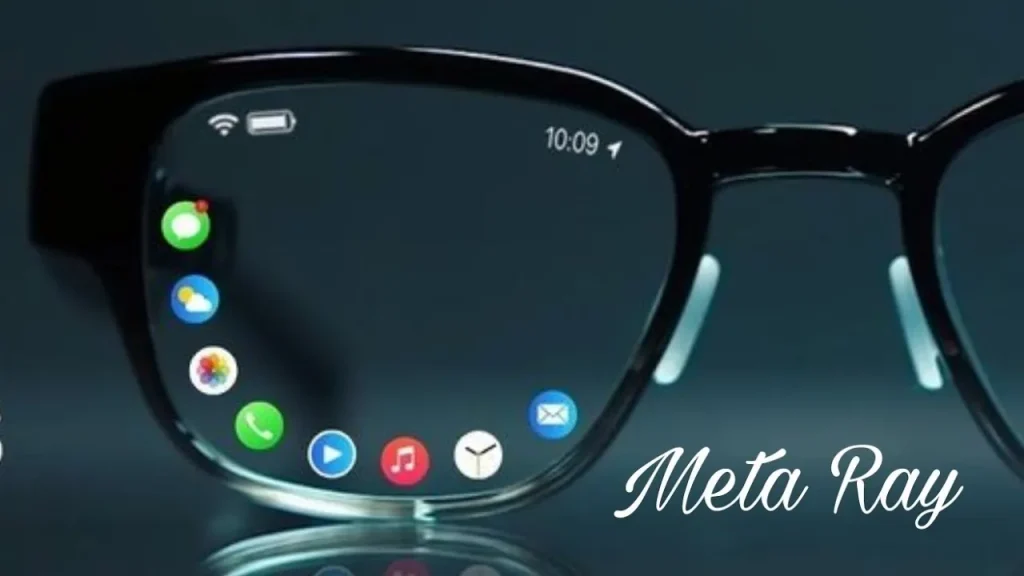
7. Smart Glasses vs. Other Wearables (e.g., Smartwatches)
When comparing smart glasses to other popular wearable devices like smartwatches, it’s clear that each device serves its own purpose and offers unique features. However, smart glasses are often considered a more immersive and hands-free experience, providing users with a different level of interaction with the digital world.
A Comparison with Other Wearable Devices, Highlighting Pros and Cons
Let’s break down the key differences between smart glasses and other common wearable devices like smartwatches.
Smart Glasses:
Pros:
- Immersive Experience: Smart glasses offer a more immersive experience, allowing users to view information, maps, or messages directly in their line of sight. Unlike smartwatches, which require users to look down at their wrist, smart glasses allow for hands-free interaction.
- Hands-Free Interaction: With voice controls, gesture recognition, and AR displays, smart glasses provide a truly hands-free experience, making them perfect for multitasking or when you need to keep your hands free (e.g., during work, exercise, or cooking).
- Augmented Reality: Many smart glasses incorporate AR technology, providing real-time digital information overlaid on the physical world. This feature is particularly useful in professional settings, such as remote assistance in industries like manufacturing or healthcare.
Cons:
- Battery Life: Although improving, the battery life of smart glasses is often shorter than that of other wearables, typically ranging from 4 to 8 hours depending on usage. For users who rely on AR or other power-draining features, this could be a limitation.
- Price: Smart glasses tend to be more expensive compared to smartwatches, particularly high-end models with AR capabilities and advanced features.
- Aesthetic Appeal: While designs are becoming more stylish, smart glasses may not appeal to everyone as they are still more noticeable than other wearable tech, such as smartwatches or fitness bands.

Smartwatches
Pros:
- Health and Fitness Tracking: Smartwatches excel at health monitoring, including heart rate, steps, calories burned, and even ECG readings. They are highly effective for tracking fitness activities and offering health-related insights.
- Longer Battery Life: Smartwatches typically have better battery life than smart glasses, often lasting 1-2 days on a single charge, depending on the model and usage.
- Cost-Effective: Smartwatches are generally more affordable compared to smart glasses, especially in the lower-end or mid-range categories.
Cons:
- Limited Display: Smartwatches have a small screen, which can be limiting when it comes to interacting with apps or reading detailed content. This is where smart glasses have the advantage, as they can display larger amounts of data through AR.
- Requires Frequent Interaction: Even though smartwatches offer some hands-free features, users still need to look at the watch and interact with the screen to access information or notifications.
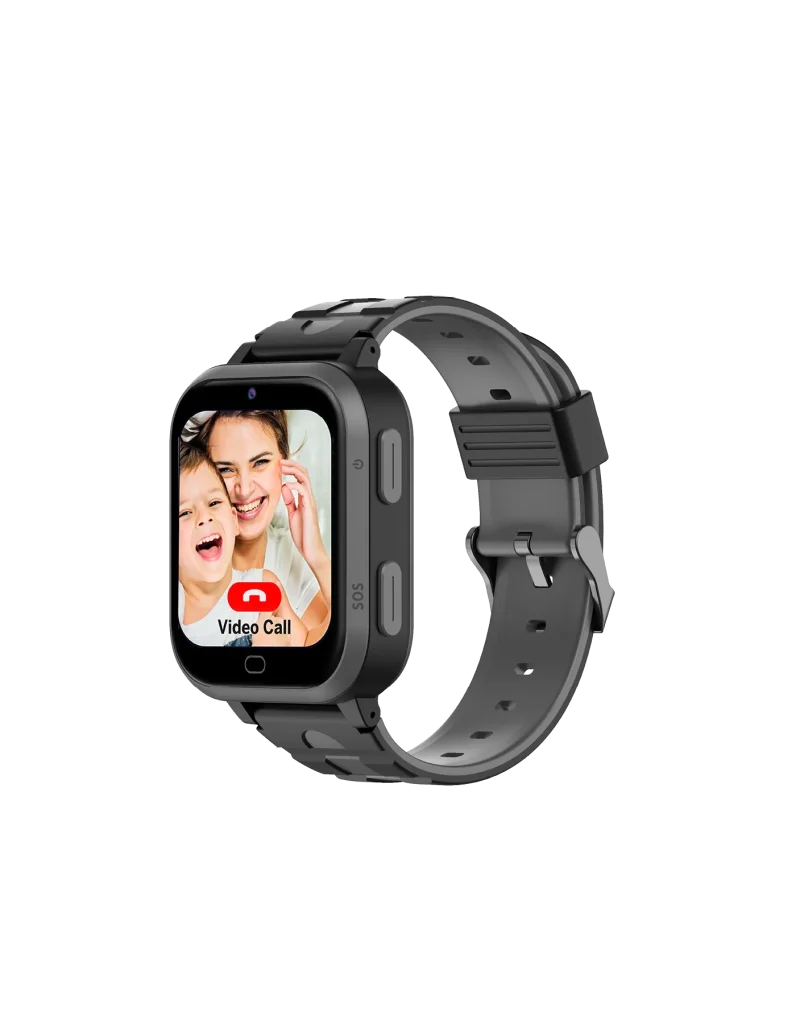
Fitness Bands:
Pros:
- Lightweight and Comfortable: Fitness bands are incredibly lightweight and comfortable, making them ideal for long-term wear during workouts or daily activities.
- Focused on Health: These devices are optimized for tracking physical activity, including heart rate, sleep patterns, and steps.
Cons:
- Limited Features: Fitness bands usually do not offer the advanced features of smartwatches or smart glasses, such as notifications, AR displays, or camera integration.
- No Display: Unlike smart glasses and smartwatches, fitness bands typically do not have displays, limiting their functionality for tasks beyond fitness tracking.
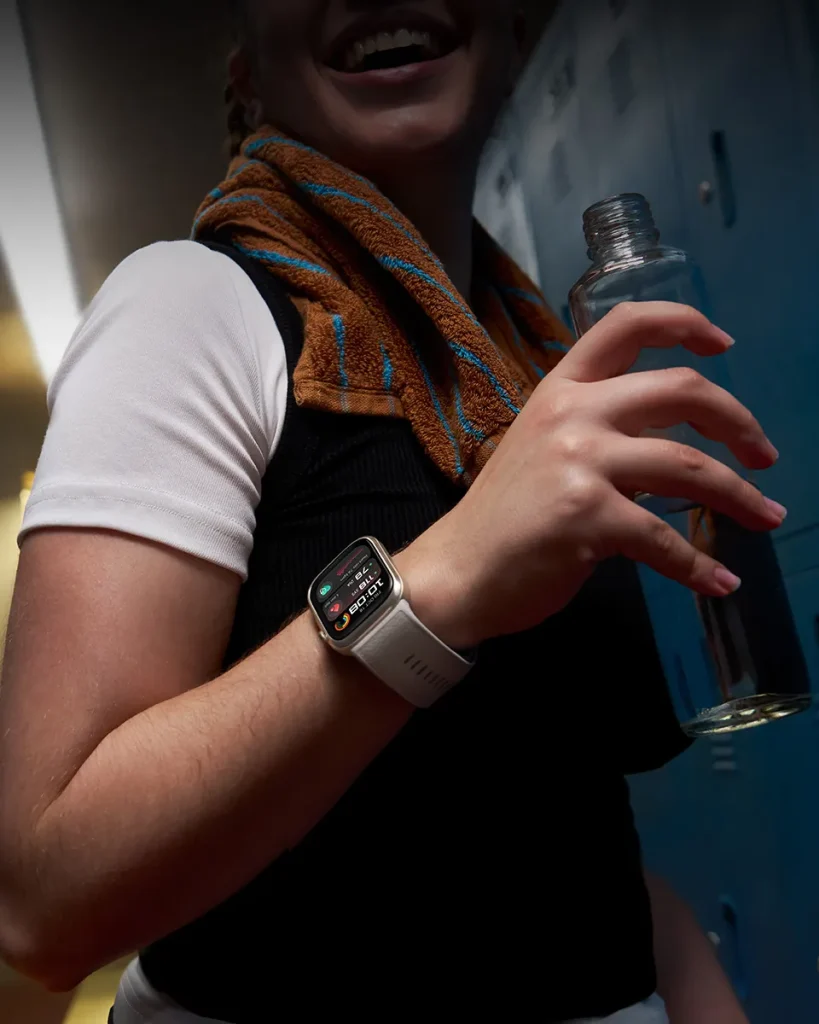
Why Smart Glasses Are Considered a More Immersive and Hands-Free Experience
Smart glasses stand out from other wearables because they offer a more immersive and hands-free computing experience. Unlike smartwatches or fitness bands, which require users to glance at their wrists and interact with a small screen, smart glasses allow users to see and interact with digital content directly in their field of vision, without the need to take out a phone or glance at a wrist.
Smart glasses with augmented reality take this to the next level by overlaying real-time data, such as navigation directions or messages, onto the real world. This allows users to stay focused on their surroundings while still receiving important information. For example, when navigating through a city, smart glasses can display walking directions in front of your eyes, allowing you to move freely without needing to hold a phone.
Additionally, voice control and gesture recognition make smart glasses even more hands-free. Users can control the device, take calls, or access apps simply by speaking commands or making small gestures, further enhancing the convenience and ease of use.
8. Connectivity and Integration with Other Devices
One of the key strengths of smart glasses is their ability to connect and integrate with other devices, allowing users to seamlessly interact with the digital world. Whether through Bluetooth, Wi-Fi, or other connectivity options, smart glasses are designed to sync with smartphones, computers, and even smart home devices. This connectivity enhances their functionality and makes them a powerful tool for everyday use.
Bluetooth, Wi-Fi, and Other Connectivity Options
Smart glasses rely on various connectivity technologies to link up with other devices, making them more versatile and functional.
- Bluetooth: Most smart glasses use Bluetooth to connect wirelessly to smartphones, smartwatches, and other devices. This allows users to receive notifications, take calls, or control music directly from their glasses without needing to interact with their phone. Bluetooth also enables hands-free communication with virtual assistants.
- Wi-Fi: Many smart glasses are also equipped with Wi-Fi capabilities, allowing them to access the internet or sync with cloud-based apps. This is particularly useful for tasks such as browsing the web, downloading updates, or connecting to other devices that rely on internet access.
- Other Connectivity: Some smart glasses may support NFC (Near Field Communication) or USB connections for syncing with other devices or transferring data. This further expands their connectivity options, allowing for a more streamlined user experience.
Syncing with Smartphones, Computers, and Other IoT Devices
Smart glasses are designed to easily sync with a variety of devices, making it easier to access and share information.
- Smartphones: Most smart glasses sync with smartphones, allowing users to receive calls, texts, notifications, and control music through the glasses. This synchronization enhances the user experience, as it allows smart glasses to act as an extension of the smartphone, enabling quick access to essential information without needing to touch the phone.
- Computers: Some smart glasses can be synced with computers, providing a larger display experience for presentations, video calls, or browsing. For example, smart glasses can work with your computer’s operating system to project information onto the glasses, allowing for multitasking and increasing productivity.
- IoT Devices: Smart glasses can also integrate with other Internet of Things (IoT) devices, such as smart home gadgets. For instance, they could connect to a smart thermostat or security camera, allowing users to control their home environment or check on security feeds without needing to use a phone or smart hub.
Integration with Virtual Assistants like Google Assistant, Alexa, or Siri
One of the most convenient features of smart glasses is their integration with virtual assistants. Smart glasses can work with popular virtual assistants like Google Assistant, Alexa, and Siri, allowing users to control various functions using voice commands.
- Voice Commands: With integrated virtual assistants, users can perform tasks like making calls, setting reminders, sending messages, or asking for directions—all without touching a device. For example, you could ask your smart glasses to “set an alarm for 7 AM” or “read my latest message.”
- Hands-Free Control: The integration with virtual assistants makes smart glasses even more hands-free, allowing users to interact with their environment using just their voice. This is especially useful when you’re on the go or have your hands occupied.
By combining Bluetooth, Wi-Fi, and seamless syncing with other devices, smart glasses can truly enhance the user experience and help create a connected, efficient lifestyle.
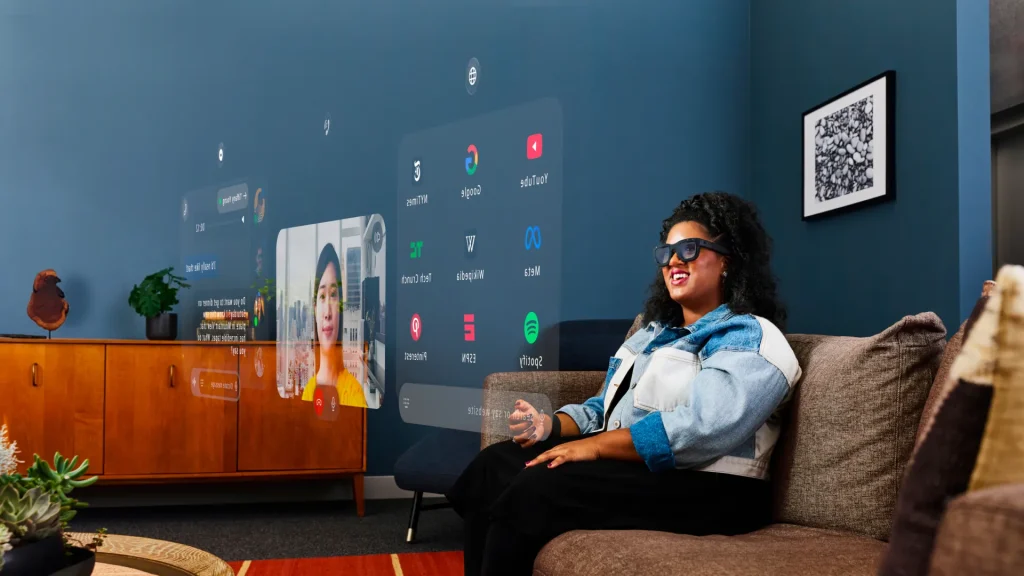
9. Augmented Reality (AR) and Virtual Reality (VR) Capabilities
Smart glasses are at the forefront of immersive computing, offering incredible AR and VR capabilities that bring digital experiences to life. By integrating augmented reality (AR) and virtual reality (VR), these devices can transform the way we interact with the world around us, making everyday tasks more interactive, engaging, and efficient.
Explore How Smart Glasses Incorporate AR/VR
- Augmented Reality (AR): AR technology overlays digital content onto the real world, allowing users to interact with both simultaneously. Smart glasses with AR capabilities can display information such as maps, instructions, or notifications directly in the user’s field of vision. For example, when wearing AR smart glasses, users could see real-time directions as they walk or work on tasks with detailed instructions projected onto their environment.
- Virtual Reality (VR): VR, on the other hand, immerses the user in a completely digital environment, blocking out the real world. While VR is more commonly associated with headsets, some smart glasses have started to experiment with VR capabilities, offering users a more portable and compact solution. In VR mode, users can engage in activities like gaming or virtual meetings, where they feel fully immersed in a digital space.
By combining AR and VR, smart glasses can offer users a highly immersive experience, blending the digital world with the physical world or even transporting users into entirely new virtual environments.
Use Cases in Gaming, Education, and Business
Smart glasses with AR and VR capabilities open up exciting possibilities across various industries. Below are some common use cases:
- Gaming: In gaming, AR glasses can overlay digital characters or objects onto the real world, creating a mixed-reality gaming experience. For instance, players could interact with virtual characters or objects that appear in their physical space. VR, on the other hand, can provide a fully immersive digital world where users can play games as if they were inside them, enhancing the realism and fun.
- Education: AR glasses are revolutionizing the classroom by enabling interactive learning experiences. Teachers can project 3D models, interactive simulations, or real-time data to help students understand complex concepts. VR, in education, allows students to experience virtual field trips or simulations of historical events, making learning more engaging and immersive.
- Business: Smart glasses with AR and VR capabilities are also changing the business world. In industries like manufacturing and medicine, AR can provide workers with real-time data or instructions, improving efficiency and accuracy. For example, in medicine, AR glasses can project a patient’s medical history or live data during surgery, helping doctors make informed decisions. In business meetings, VR can offer virtual meeting spaces where participants can interact as if they were physically present.

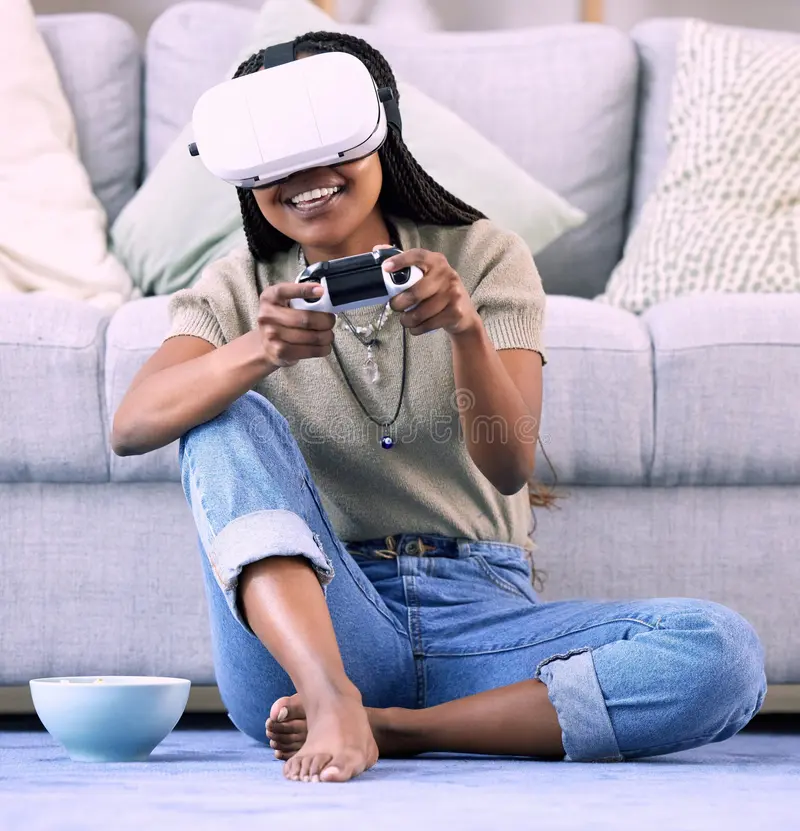
The Potential of Immersive Computing with AR Glasses
The potential of immersive computing with AR glasses is enormous. As the technology continues to evolve, we can expect smart glasses to be even more integrated into our daily lives and work environments. The seamless blend of digital and physical realities offered by AR has the potential to change the way we interact with everything—from learning and entertainment to productivity and collaboration.
In the future, smart glasses could replace smartphones, allowing users to interact with digital content in a more natural, intuitive way. For example, you could have real-time access to information, manage tasks, or even control devices around you, all while remaining fully engaged with your physical environment.
10. Privacy and Security Concerns
As smart glasses become more popular and integrated into everyday life, privacy and security concerns are growing issues that need to be addressed. With their ability to record audio, capture video, and collect personal data, smart glasses raise important questions about how information is used, shared, and protected. Let’s explore the key privacy and security challenges and how manufacturers are working to address them.
Issues Surrounding Data Collection, Surveillance, and Security Breaches
Smart glasses are equipped with a variety of sensors, cameras, and microphones, which allow users to capture images, record videos, and interact with their environment. While these features provide significant benefits, they also pose privacy risks.
Data Collection: Smart glasses often collect large amounts of personal data, such as your location, habits, and even conversations. This raises concerns about how this data is used, stored, and shared with third parties. For example, if you wear smart glasses in public, the built-in camera could capture footage of others without their consent, leading to potential privacy violations.
Surveillance: Because smart glasses can record videos and take photos at any time, there is concern about their potential use for constant surveillance. This could be particularly troubling in sensitive situations, such as in workplaces or public spaces, where individuals might not be aware they are being recorded.
Security Breaches: Like all connected devices, smart glasses are vulnerable to hacking and data breaches. If the glasses are connected to the internet or synced with other devices, hackers could potentially gain access to personal information, including photos, messages, or location data.
How Smart Glasses Address Privacy Concerns
Manufacturers of smart glasses are aware of these concerns and have started implementing features to protect user privacy and improve security. Some of the ways they are addressing these issues include:
- Data Encryption: Many smart glasses use data encryption to protect the information stored on the device or transmitted to other devices. Encryption ensures that even if someone gains unauthorized access to the data, they will not be able to read or use it. This is particularly important when sensitive information, such as personal photos or medical data, is being collected.
- Voice Command Control: To enhance privacy, some smart glasses allow users to control the device entirely through voice commands, reducing the need to interact with the glasses manually. This feature limits the chances of accidental data capture, as users can choose when to record or take photos. It also helps ensure that information is only accessed when the user intentionally engages with the device.
- Camera and Microphone Control: Smart glasses now come with built-in controls to disable the camera and microphone, ensuring users have control over when these features are active. This prevents the glasses from recording or taking photos when it is not needed, providing users with peace of mind.
- Notification Features: Some models include visual or audio notifications that alert nearby people when the camera is in use, providing transparency and helping to prevent surreptitious recording. This can be especially important in public or private spaces where privacy is a concern.
The Importance of Transparency in Smart Glasses Use
In addition to these technical features, it is crucial for manufacturers to be transparent about how data is collected, used, and stored. Clear communication about privacy policies and user consent can help users feel more confident in using smart glasses without worrying about their personal information being misused. Ensuring users are aware of their rights and how to control data-sharing settings is an important step in building trust and addressing privacy concerns.
11. Cost of Smart Glasses
The cost of smart glasses varies greatly depending on the features, brand, and model. Whether you’re looking for entry-level models or premium devices, it’s important to understand what you’re getting for the price. In this section, we’ll explore the price range for different smart glasses models and compare the cost to the value they provide based on their features.
Price Range for Various Models (Entry-Level vs. Premium)
Smart glasses come in a wide range of prices. The cost generally depends on the technology, build quality, and additional features.
- Entry-Level Models:
Entry-level smart glasses typically cost between $100 to $300. These glasses focus on basic functionality such as audio integration, Bluetooth connectivity, and simple displays. They often lack advanced features like augmented reality (AR) or high-quality cameras. These models are a good option for users looking for an affordable introduction to smart glasses.
Examples of entry-level smart glasses include:
- Bose Frames: Priced around $200, they focus primarily on audio features, offering high-quality sound for music and calls but lack an integrated display or camera.
- Snap Spectacles: Priced around $150 to $250, these glasses have basic camera functionality for recording short video clips, mainly aimed at social media sharing.
- Bose Frames: Priced around $200, they focus primarily on audio features, offering high-quality sound for music and calls but lack an integrated display or camera.
- Premium Models:
Premium smart glasses are priced between $400 to $2,000 or more. These glasses tend to include advanced features such as augmented reality (AR), higher-quality displays, camera systems, and better integration with other devices. They are typically designed for both personal and professional use, offering more robust performance and additional functionalities.
Examples of premium smart glasses include:
- Meta’s Ray-Ban Stories: Priced around $300 to $400, these smart glasses offer stylish design with audio integration, a built-in camera, and seamless smartphone connectivity.
- Google Glass Enterprise Edition 2: This model is priced upwards of $1,000 and is designed for professional use, with advanced AR capabilities and integration with enterprise software.
- Vuzix Blade: These glasses, which offer augmented reality features and are priced around $1,000 to $1,500, are often used in business and industrial applications.
- Meta’s Ray-Ban Stories: Priced around $300 to $400, these smart glasses offer stylish design with audio integration, a built-in camera, and seamless smartphone connectivity.
Cost-to-Value Comparison Based on Features
When comparing the cost of smart glasses, it’s important to consider what you’re getting in return. Here’s a breakdown of the cost-to-value relationship for various models:
- Entry-Level Models:
For the lower price range, entry-level smart glasses offer good value for basic functionality. They typically include features like audio, simple connectivity, and basic cameras. However, they lack the advanced features of premium models such as AR displays or high-quality imaging.
Value Considerations:
- Good for music, calls, and basic notifications.
- Ideal for casual users who want smart features without a hefty price tag.
- Limited functionality compared to premium options.
- Good for music, calls, and basic notifications.
- Premium Models:
Premium smart glasses, while more expensive, offer a much higher value in terms of functionality. With features like AR displays, high-quality cameras, advanced sensors, and better integration with virtual assistants, they provide a much more immersive and hands-free experience.
Value Considerations:
- Offers advanced features like AR, better integration with apps, and enhanced privacy controls.
- Best for users who need smart glasses for professional purposes or those seeking the latest technology.
- Higher price is justified by additional functionalities like AR, better battery life, and superior design.
- Offers advanced features like AR, better integration with apps, and enhanced privacy controls.
For those on a budget, entry-level models may be a good starting point, while users who are seeking a more advanced experience with professional-grade features should consider premium models.
12. Pros and Cons of Smart Glasses
Smart glasses offer many exciting features, but they also come with a few challenges. In this section, we’ll look at the advantages and disadvantages of smart glasses, helping you decide if they are the right choice for you. As we explore the pros and cons, we will keep the focus on “Smart Glasses: The Future of Computing?”.
Advantages of Smart Glasses
Hands-Free Computing:
One of the biggest advantages of smart glasses is their ability to provide hands-free computing. With features like voice control, gesture recognition, and AR displays, users can interact with the device without having to physically touch anything. This is perfect for multitasking or when you need to keep your hands free for other tasks.
Increased Mobility:
Smart glasses offer increased mobility compared to other devices like smartphones or tablets. Since they are worn on your face, you can access information, make calls, or navigate without needing to stop and pull out your phone. This makes them ideal for activities such as walking, running, or cycling.
Augmented Reality (AR) Integration:
AR smart glasses provide an immersive experience by overlaying digital information on the real world. This can be extremely useful in fields like education, gaming, or business, where users can interact with virtual objects in real-time while still being aware of their physical surroundings.
Improved Productivity:
With smart glasses, you can receive notifications, check messages, or even control other devices without taking your hands off your work. This makes them especially valuable in professional settings where workers need to stay focused and efficient. For instance, in healthcare or manufacturing, workers can access real-time data or instructions while keeping their hands free for the task at hand.
Enhanced Communication:
Many smart glasses allow users to make calls, send messages, and even video chat, all while keeping their hands free. With built-in speakers and microphones, communication becomes more convenient, especially when you’re on the move.
Disadvantages of Smart Glasses
Battery Life:
One of the main drawbacks of smart glasses is battery life. Due to the advanced technology inside, smart glasses typically last between 4 to 8 hours on a single charge, depending on usage. For users who rely on AR features or use the glasses for extended periods, this could be limiting. While some models offer quick charging, the overall battery performance is still a concern.
Comfort:
Although many smart glasses are designed to be lightweight and ergonomic, they may not be as comfortable for long-term wear as traditional glasses. Depending on the model, users may experience discomfort, especially around the temples or nose. The added weight from built-in technology like cameras, sensors, or batteries can also affect comfort during extended use.
Privacy Concerns:
Smart glasses, especially those with cameras and microphones, raise privacy concerns. Since they can record video or capture audio without others being aware, there’s potential for misuse, such as unauthorized surveillance or data collection. Users need to be cautious about where and when they use smart glasses to avoid privacy violations.
High Cost:
Premium smart glasses can be quite expensive, with prices ranging from several hundred to over a thousand dollars. While entry-level models are more affordable, they often lack the advanced features found in high-end versions. The high cost may be a barrier for some people who are not willing to pay for the added functionality.
Aesthetic and Social Acceptance:
Although many smart glasses now have more stylish designs, they can still be more noticeable than traditional eyewear. Some people might feel self-conscious about wearing them in public, especially in social settings where others may view them as intrusive. The social acceptance of smart glasses is still evolving, and for some, wearing them might feel awkward or out of place.
13. Future of Smart Glasses
The future of smart glasses is filled with exciting possibilities. As technology continues to advance, these devices will become even more integrated into our daily lives and change how we interact with the digital world. In this section, we will look at emerging trends in smart glasses technology, predictions for their role in computing, and how they might transform the way we live and work.
Emerging Trends in Smart Glasses Technology
MicroLED Displays:
One of the most promising trends in smart glasses technology is the use of microLED displays. Unlike traditional LCD or OLED screens, microLED displays are smaller, more energy-efficient, and offer better brightness and contrast. These displays could make smart glasses even lighter, with clearer visuals and longer battery life. MicroLED technology has the potential to improve the AR experience by offering sharper and more vibrant digital content overlaid on the real world.
AI-Powered Optics:
Artificial Intelligence (AI) is also making its way into smart glasses. With AI-powered optics, these devices could automatically adjust to different lighting conditions, improve the quality of images or videos, and even enhance augmented reality content. For example, AI could help the glasses detect objects in the user’s environment and provide real-time, context-aware information. This could make the experience more intuitive, reducing the need for user input and providing smarter interactions.
Improved Battery Technology:
As battery life is one of the biggest challenges for current smart glasses, we can expect major improvements in battery technology over the next decade. Solid-state batteries and energy-efficient components could help extend the battery life of smart glasses, allowing them to run for a full day or more on a single charge. This would make them more practical for long-term use, especially for those relying on them for work or other professional tasks.
Miniaturization of Components:
As technology advances, the components inside smart glasses—such as cameras, sensors, and processors—are becoming smaller and more efficient. This means that future smart glasses could be even more compact, lighter, and comfortable to wear, making them more attractive to a wider audience.
Predictions for the Role of Smart Glasses in Computing Over the Next Decade
In the next decade, smart glasses will likely play a crucial role in the evolution of computing. Here’s how they might fit into the future of technology:
- Replacing Smartphones:
As smart glasses become more powerful and capable, they could replace smartphones as the primary interface for interacting with digital content. Instead of constantly reaching for a phone to check messages, get directions, or answer calls, users could simply look at their smart glasses for all the information they need. This would create a more seamless, hands-free experience that integrates digital content directly into the real world. - Expansion in Business and Healthcare:
Smart glasses are already being used in industries like healthcare, manufacturing, and logistics, and this trend will continue to grow. In healthcare, for example, doctors could use AR to view patient records during surgery, while in manufacturing, smart glasses could provide real-time guidance for workers. As the technology advances, smart glasses could become essential tools in professional environments, helping people to work more efficiently and effectively.
Integration with Smart Environments:
As the Internet of Things (IoT) grows, smart glasses will likely become more integrated with smart homes and smart cities. For example, smart glasses could allow users to control home devices, like lights, thermostats, or security systems, simply by looking at them or using voice commands. They could also provide real-time data about the surrounding environment, such as traffic conditions or public transport updates.
How Smart Glasses Could Change the Way We Interact with the Digital World
Smart glasses are set to revolutionize how we interact with technology. Here’s how they might change our relationship with the digital world:
- Seamless Digital Integration:
Smart glasses will make the digital world blend more seamlessly with the physical world. Users will no longer need to switch between multiple devices or screens to access information. Instead, they’ll see data, notifications, or AR content directly in their field of vision, making it easier to access and interact with digital information as part of everyday life. - More Immersive Experiences:
With advancements in AR and VR, smart glasses will provide more immersive experiences, allowing users to interact with digital content in a way that feels natural and intuitive. Whether it’s for gaming, learning, or work, the ability to engage with 3D objects or virtual environments in the real world could change how we experience entertainment, education, and professional tasks. - Enhanced Communication:
In the future, smart glasses could change the way we communicate. For example, they could allow for video calls that feel more natural, with the ability to look at someone’s face or surroundings while conversing. Additionally, real-time translation and transcription could make communication easier across language barriers, enhancing global connectivity. - Personalized and Context-Aware Interactions:
With AI and sensor technologies, smart glasses could become highly personalized and context-aware. They could detect the user’s environment, preferences, and needs to provide tailored information or recommendations. For example, if you’re in a museum, smart glasses could display information about the exhibits you’re looking at. If you’re walking in the city, they could provide navigation and points of interest based on your location.
14. Conclusion
In this post, we’ve explored the exciting world of smart glasses and their potential to shape the future of computing. From their ability to offer hands-free computing and augmented reality (AR) experiences, to their growing use in both personal and professional settings, smart glasses are undoubtedly an innovative technology with a lot of promise.
We’ve discussed how smart glasses integrate with other devices, improve productivity, and change the way we interact with the digital world. We also looked at emerging trends like microLED displays and AI-powered optics, which will make future smart glasses even more advanced and efficient. While there are still some challenges, such as battery life and privacy concerns, the potential benefits far outweigh the drawbacks.
As we move forward, smart glasses are likely to become a central part of how we live, work, and connect with the world around us. They have the power to replace traditional devices like smartphones and bring immersive, hands-free computing into everyday life. With the ongoing advancements in technology, smart glasses are truly the future of computing.
If you’re excited about this technology, now is the perfect time to explore the different smart glasses models available. Whether you’re interested in Ray-Ban Stories, Google Glass, or other smart glasses, there’s something for everyone. Comment below if you have any thoughts or questions, and feel free to share this post with others who might be interested. Have you tried any smart glasses? Let us know your experience!

Portable balancer & Vibration analyzer Balanset-1A
Description:
Price:
7500 PLN / 44250 CZK / 1751 EUR / 715000 HUF Full kit Order on Allegro
6700 PLN / 39550 CZK / 1561 EUR / 640000 HUF OEM kit Order on Allegro
Balanset-1A Device Description
The Balanset-1A is a highly portable, dual-channel device tailored for rotor balancing and vibration analysis. It’s ideally suited for balancing rotors like crushers, fans, mulchers, choppers, shafts, centrifuges, turbines, and other rotating machines.
Main Functions and Features
Vibration Measurement Mode
Tachometer: Accurate RPM measurement.
Phase: Determines the vibration signal’s phase angle for accurate analysis.
1x Vibration: Measures and analyzes the primary frequency component.
FFT Spectrum: In-depth analysis of the vibration frequency spectrum.
Overall Vibration: Keeps track of overall vibration levels.
Measurement Log: Archives data for future analysis.
Rotor Balancing Mode
Single-Plane Balancing: Adjusts rotors in one plane to reduce vibration.
Two-Plane Balancing: Dynamic rotor balancing in two planes.
Polar Diagram: Shows imbalance on a polar chart for precise weight positioning.
Last Session Recovery: Provides the option to resume the last balancing session.
Tolerance Calculator (ISO 1940): Computes allowable imbalance as per ISO 1940 standards.
Grinding Wheel Balancing: Balances grinding wheels using three counterweights.
Graphs and Diagrams
Overall Graphs: Displays general vibration levels.
1x Graphs: Visualizes vibration characteristics at the primary frequency.
Harmonic Graphs: Analyzes the presence and impact of harmonic frequencies.
Spectral Graphs: Graphically shows the frequency spectrum for in-depth analysis.
Additional Functions
Archive: Retain and retrieve previous balancing sessions.
Reports: Generate detailed balancing reports.
Rebalancing: Facilitates rebalancing with previously saved data.
Serial Production Balancing: Perfect for mass production rotor balancing.
What’s in the Package
The Balanset-1A kit includes:
A measurement block with USB interface.
A pair of vibration sensors.
Laser tachometer with magnetic mount.
Digital weighing scales.
Software (laptop can be ordered separately).
Protective transport case.
Price:
7500 PLN / 44250 CZK / 1751 EUR / 715000 HUF Full kit Order on Allegro
6700 PLN / 39550 CZK / 1561 EUR / 640000 HUF OEM kit Order on Allegro